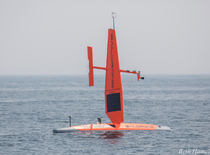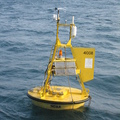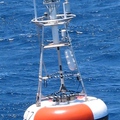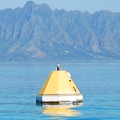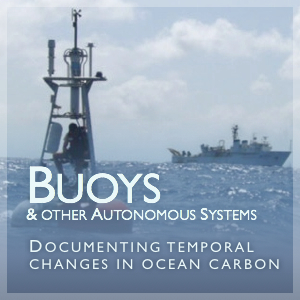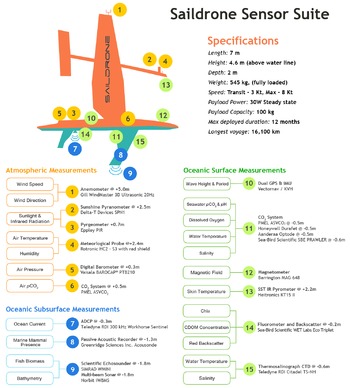Autonomous Surface Vehicles
Developing new platforms for carbon measurements
Use of these vehicles could lead to a new paradigm for economical underway surface observations that does not rely on expensive research ships and is not restricted to the standard shipping lanes of volunteer vessels.
The PMEL carbon group has teamed up with Liquid Robotics Inc. and Saildrone Inc. to integrate Autonomous Surface Vehicle CO2 (ASVCO2®) systems into Wave Gliders and Saildrones. These ASVs represents innovative approaches to ocean persistent presence. The Wave Glider harnesses ocean wave energy to provide essentially limitless propulsion while solar panels continually replenish the batteries used to power the control electronics and payload systems. The Wave Glider vehicle is propelled by the purely mechanical conversion of ocean wave energy into forward thrust, independent of wave direction. Saildrone electronics and sensors are also powered by solar panels, and wind propulsion allows Saildrones an average speed of 2-3 knots and can reach top speeds above 8 knots.
Through extensive engineering trials, demonstrations, and research missions, the capability of these ASVs for long-term autonomous operation in the open and coastal oceans has been firmly established. Missions have included surveys of the U.S. West Coast including Alaska, basin-scale crossings from Hawaii to San Diego and San Francisco to the Equatorial Pacific, and high-latitude missions in the Bering Sea, Chukchi Sea, and Southern Ocean.
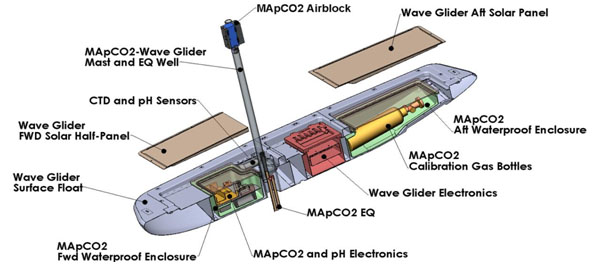
The figure above shows a cut-away view of the integration of the ASVCO2® system, a modified Moored Autonomous pCO2 (MAPCO2®) system, onto the Wave Glider platform (Carbon Wave Glider, CWG). The figure to the right shows a schematic of the high quality oceanic and atmospheric sensors on Saildrones. For more information on PMEL's Saildrone deployments, including mission blogs, see PMEL's Ocean Climate Stations and Innovative Technology for Arctic Exploration. For more information about the MAPCO2® and ASVCO2®, please refer to the summary here.
Transcript below

